“A woodpecker is hammering on my house. It’s damaging my siding and driving me nuts. What can I do?” asked a longtime friend.
Woodpeckers often hammer on buildings, and we’ve taken dozens of calls from homeowners seeking relief. There are ways to discourage the plucky birds.
Woodpeckers bang on wood for at least three reasons:
- Drumming. Drumming on wood or metal in a rapid burst announces the bird’s presence to others. It is loud advertising.
- Nesting. Woodpeckers excavate cavities, usually in dead trees, to make a safe comfortable nest in the spring. A snug nest within an insulated wall is a great substitute for a tree.
- Food. Woodpeckers make their living dining on insects lurking in wood. Commonly this is a fall and winter activity, especially on home sided with rustic
T 111 plywood.
We love woodpeckers, and so do most people. But, no one wants damage to their home. So, how can it be prevented?
Prevention
It’s tough to stop drumming, but the good news is that it is usually of short duration in the spring and rarely damages the home.
It is difficult to stop birds from excavating a nest, but fortunately this is relatively rare. The long-term solution is to side the home with a durable hard material. Bricks are ideal.
Foraging may be the most common home damage. It can be extensive and comes with annoying noise as the bird removes wood to expose hidden bugs. Here are some solutions:
If building a new home, specify siding that lacks holes and cracks. If no insects can enter woodpeckers have no reason to try to extract them.
- With a caulking gun and putty knife plug every possible hole in the home’s exterior in late winter or early spring. This prevents insects from entering.
- If a woodpecker is foraging on a small section of the house draping light duty netting, the material sold to keep birds off cherry trees, will physically keep the birds away. Sometimes it can be stapled to an overhanging eve and to the siding below.
- Luring a bird away from the home may work. Erect a suet feeder 40 or 50 feet away from the house. The woodpecker might prefer eating easy-to-get suet instead of digging bugs out of the home.
- The Pileated woodpecker – Woody Woodpecker – is a sight to see!
- Woodpeckers dig for insects on trees.
- These woodpeckers are happy to forage for insects on a tree trunk.
Perhaps the best strategy for enjoying woodpeckers but preventing damage is to protect nearby dead trees. If a tree poses no falling threat to a structure, car, or person, leaving it in place gives woodpeckers a place to drum, nest, and find tasty insect meals.
Woodpeckers are amazing and beautiful animals that bring us joy. We are fortunate to have hairy, downy, red-bellied, red-headed, pileated, flicker, and sapsucker at Winding Pathways. They enjoy our feeders and leave the house alone.
- Woodpeckers would rather eat from a suet ball than drill on a house.
- We’ve had all sorts of interesting woodpeckers at the feeders.
- We tuck suet in Evergreen trees for the birds to enjoy.

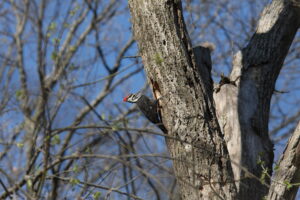
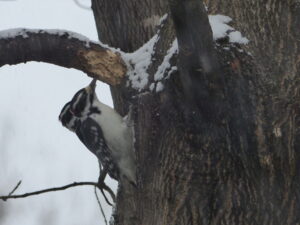
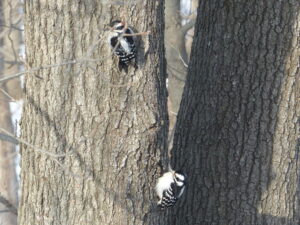
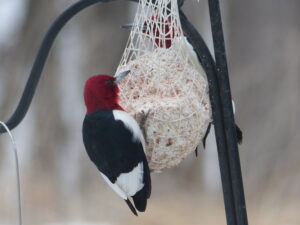
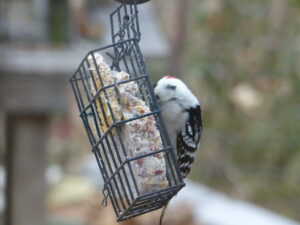
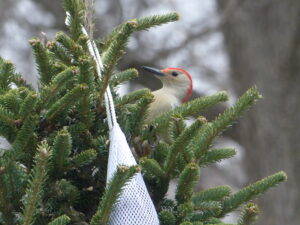

I love woodpeckers. Every sighting is treat. We don’t get many at our feeders, but I like your idea of tucking suet into evergreen trees. We have a large concolor fir that will be ideal for that.